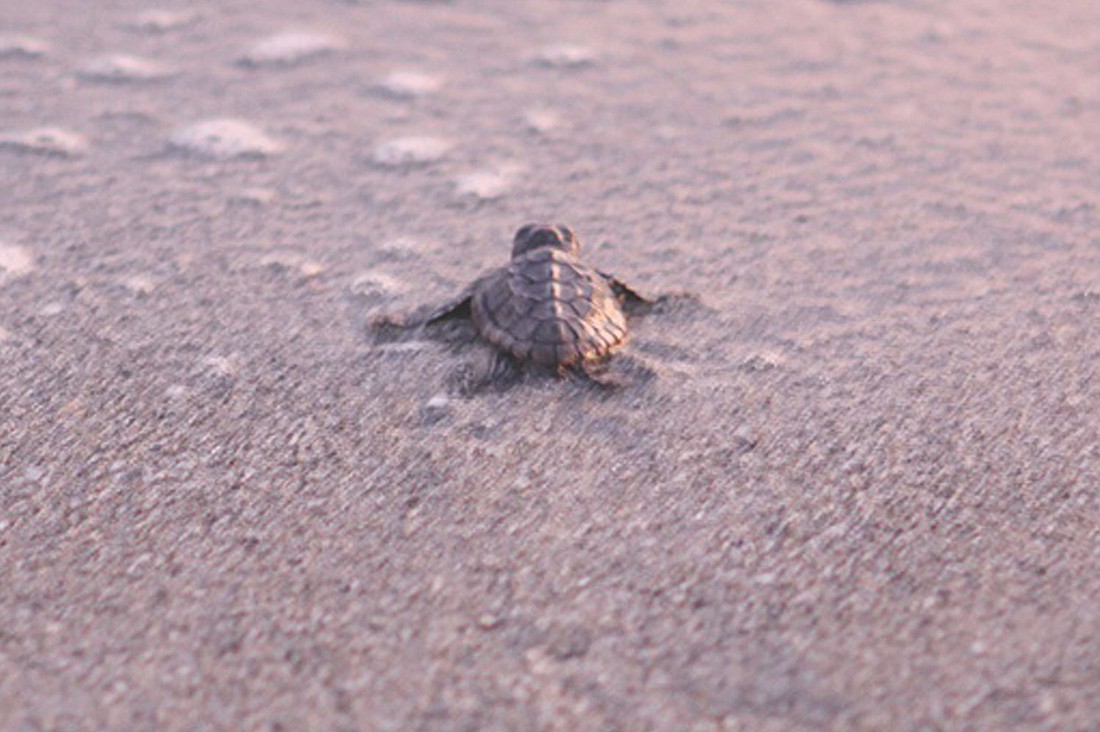- November 28, 2024
-
-
Loading

Loading

Sea-turtle nesting season is under way on Siesta Key, meaning endangered marine reptiles will be wriggling onto beaches in search of a place to lay their eggs. And humans will be tinting lights and dragging beach furniture in at night to avoid fines as high as $250 per day.
From May to October, Siesta residents are required to make sure their seaside lights are too dim to be seen from the water’s edge and move obstacles such as tables, chairs and umbrellas off of the beach at night to comply with the Sarasota County Marine Turtle Protection Code — or face fines after a single warning.
But, according to Kristen Mazzarella, a senior biologist in the Sea Turtle Protection and Conservation Program at Mote Marine Laboratory, condominium owners aren’t as perturbed by the 1997 ordinance as they have been in the past. Mazzarella and her team, along with Sarasota County employees, distributed educational packets to condo and neighborhood organizations and beachfront property owners before the season commenced.
Walt Olson, vice president of the Siesta Key Condominium Council, said he’s happy to oblige with the turtles’ lighting and decorating requests.
“Some of the restrictions can be a nuisance, but, overall, people think it’s well worth it,” he said.
The total number of nests on Siesta Key from 2010 and 2011 trend upward, and loggerhead and green sea turtles are the most common nesting visitors to Siesta. Mazzarella is hoping to spot a Kemp’s ridley nest in this year’s turtle influx.
“We didn’t get any last year,” she said, “The closest nest was up in Clearwater.”
But the protection code isn’t foolproof. Keri Nelson, an environmental scientist with Sarasota County, said curious kids can contribute to false crawls — when a female returns to the sea without nesting. The ordinance certainly doesn’t include restrictions on building sand castles, but deep holes in the sand can trap or disorient turtles.
“They don’t have a reverse button,” Nelson explains. And raccoons and other rodents can be egg-thieving nuisances.
Mote Marine leads a contingent of 350 volunteers in shoreline walks from Longboat Key down to Venice every morning during nesting season to document nests and turtle tracks. When flipper-prints lead to the surf without evidence of a nest, they record a false crawl; the patrol notifies Sarasota County when they lead toward beach properties.
Residents on the southern part of Siesta Key should be especially vigilant because the majority of nesting tends to occur there and hatchlings emerge sooner.
“They don’t call it ‘Turtle Beach’ for nothing,” Mazzarella laughs.
The dark, coarse sand on Turtle Beach attracts heat, speeding up the incubation time of turtle eggs. Further north, eggs take longer to hatch because of the cooling effects of Siesta’s famous powdery sand.
Despite the positive trend, it’s difficult to use historical data to forecast nest expectations.
“We never really know how many nests we’ll see,” Mazzarella explains. “But we’re definitely optimistic,” she said.
By the Numbers
155 — the number of sea-turtle nests reported in 2011 on Siesta Key, up 14% compared with 2010.
183 — the number of false crawls reported in 2011 on Siesta Key, an increase of 10% compared with 2010.
1997 — Sarasota County enacts the Sarasota County Marine Turtle Protection Code, which requires lights on beachfront properties to be dim enough so the bulb cannot be seen from the waters’ edge.
2004 — The code is amended to include a clause requiring the removal of unnatural items from the beach. Sea turtles may bump into chairs, tables or umbrellas, sending them back into the ocean without laying eggs.
*Data courtesy of mote.org.